Opinion
Another international airport!
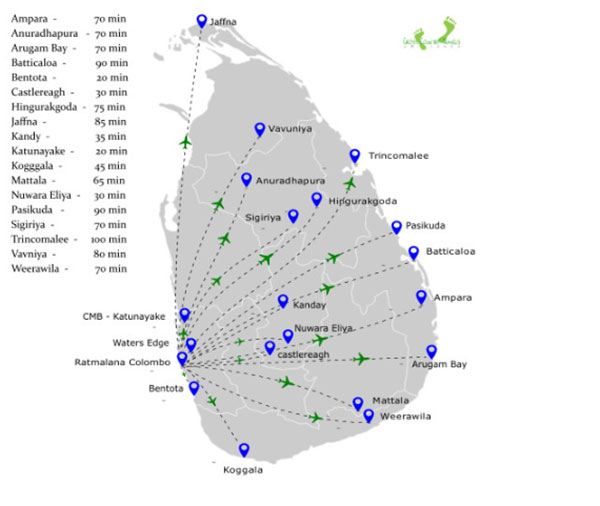
President Ranil Wickremesinghe has announced in his budget speech that he has allocated Rs 2 billion to construct another international airport at Hingurakgoda (Minneriya).
Really?
We already have ‘International Airports’ at Ratmalana, Jaffna/Palaly (KKS), Mattala, Batticaloa and Katunayake. In fact, in the North, South, East and West of the island. BIA-Katunayake is the only International Airport that has been operating at close to its maximum capacity. The others are ‘White Elephants’, maintained at tremendous cost to the taxpayer. According to the Minister of Aviation, Mattala – described as ‘The loneliest airport in the world’ – is costing Rs.10 million a month to operate.
Does having so many ‘International’ airports make sense in an island nation like ours? Assuming that all these international airports were active, what sort of problems could we expect to contend with in terms of CIQ (Customs, Immigration and Quarantine)? For instance, in case of another pandemic on the scale of Covid-19 we would be hard-pressed to pay the cost of trying to contain it. Obviously, we need less points of entry for international passengers.
The President should be aware that an Aviation Policy was passed in Parliament in 2017. Today it remains nothing more than a fairy tale. As usual, all governments are clever at laying down policy, but sadly fail when it comes to implementation. In accordance with the Aviation Policy, I believe the best solution is to construct a second runway at BIA after perhaps relocating the Sri Lanka Air Force to Hingurakgoda. (The SLAF has another western SLAF base at Ratmalana anyway.)
So why not use some of the money allocated for Defence? Statistics show that there are only two or three days a year when bad weather forces aircraft to divert from BIA to other airports. Therefore, with a second runway at BIA, airlines can legally bring less diversion fuel on good weather days, catering only for runway obstructions. This will be cheaper for all airlines including the national carrier, because extra fuel means more weight and the aircraft burns more fuel to carry fuel!
The next logical step is for the authorities to establish and promote domestic air links, run by the private sector, to the many airports and airstrips in the country (a total of 16). There are several water-dromes too. The Aviation Policy 2017 speaks of multi-modal transportation (road and rail) from those airports to the nearest city/village. Not many know that there are airports already existing all over the island. I have flown to all of them: Jaffna (KKS), Iranamadu, Thalladi (Mannar), Vavuniya, Anuradhapura, China Bay (Trincomalee), Sigiriya, Puttalam (Palavi), Hingurakgoda (Minneriya), Ratmalana, Katukurunda, Koggala, Mattala, Weerawila, Ampara and Batticaloa. (See map)
All these airports, except for Thalladi and the water-dromes, carry a four-letter International Civil Aviation Organisation (ICAO) identifier, so it should be relatively painless obtaining the International Air Transport Association (IATA) three-letter identifier for these airports for commercial ticketing purposes. Tickets could then be sold for flights from any international departure point directly to any other destination in Sri Lanka. That will be a boon to the tourism industry.
In short: no more ‘International Airports’, Mr. President. Just implement the Aviation Policy of 2017 ASAP. Let’s use the allocated Rs. 2 billion to improve Domestic Aviation
Capt. (ret) G A Fernando MBA gafplane@sltnet.lk
RCyAF/SLAF, Air Ceylon,
Air Lanka, Singapore Airlines, SriLankan Airlines,
Civil Aviation Authority
Sri Lanka.
Immediate past-President of Aircraft and Owners’ Association Sri Lanka.
President UL Club, Sri Lanka,
Joint Secretary Colombo Flying Club
Opinion
Unlocking SL tourism potential through digital photography:

A blueprint for economic revival
by Dammike Kobbekaduwe, FIPM(SL), CIPM-SL, MBA(HR
As Sri Lanka navigates a difficult economic crisis, the tourism industry stands as a beacon of hope for a quick turnaround. This article outlines the significance of digital photography as a tool to boost the country’s tourism, focusing on the innovative CPT 2023 project, which envisions training 1,000 digital photographers to enhance Sri Lanka’s presence on Google Maps. By leveraging affordable digital cameras linked to cloud technology and promoting historical connections with international historians, Sri Lanka can not only attract more upmarket tourists but also revitalize its economy. Photography holds the power to address global issues, and with strategic investments, it could reshape Sri Lanka’s financial future.
Objectives and Goals
To explore the role of digital photography in reviving Sri Lanka’s tourism.
To highlight the CPT 2023 project’s vision and its expected impact.
To propose innovations in digital photography, such as cloud-linked cameras, to minimise post-production time.
To identify untapped areas of tourism that Sri Lanka can explore.
To connect Sri Lanka’s rich history with global narratives to attract a broader tourist demographic.
Detailed Explanation
Invention of Photography
The world’s first camera, the “camera obscura,” was refined into a practical device for capturing images by Joseph Nicéphore Niépce in the early 19th century. His work, alongside that of Louis Daguerre, led to the creation of the first permanent photograph in 1826. Over the years, the demand for photography grew as people wanted to preserve memories, document events, and share their lives visually. This demand transformed photography into a lucrative business.
Photography’s Business Growth
The evolution of photography as a business stemmed from several factors, including the desire for personal documentation, mass media’s increasing reliance on visual content, and the expansion of social media platforms that thrive on imagery. Photography addresses the global citizen’s need to express identity, capture history, and share cultures.
Impact on Global Challenges
Photography has also become a key tool in addressing global problems. It raises awareness on critical issues such as climate change, social injustice, and cultural preservation. Through visual storytelling, photographers document global challenges, bringing them to the forefront and motivating action. Sri Lanka, with its rich cultural and natural heritage, can harness this power to showcase its beauty and attract international tourism.
Global Definitions and Classifications
Videography: The art or process of making films or videos, often involving various stages from pre-production to post-production.
Digital Photography: The process of capturing images through electronic sensors that save them as digital files, which can be easily shared or edited.
Digital photography is classified into several types, including:
Portrait Photography, Landscape Photography, Architectural Photography, Wildlife Photography, Macro Photography,
Untapped Tourism Opportunities in Sri Lanka
While Sri Lanka already attracts a fair share of tourists, there are significant untapped areas that could be explored further, including:
Eco-Tourism: Promoting the country’s biodiversity and environmental richness.
Cultural and Historical Tourism: Uncovering lesser-known historical sites beyond popular locations.
Adventure Tourism: Developing hiking trails, safaris, and outdoor sports for adventure enthusiasts.
Heritage Tourism: Collaborating with global historians to reveal ancient ties between Sri Lanka and other countries.
CPT 2023 Project: Vision for the Future
The CPT 2023 project, launched jointly by www.vivonta.lk and Athula Jayasundera during his tenure as President of the UPSSL, has a unique approach to expanding tourism through digital photography. The project aims to train 1,000 photographers across 2,218 GN divisions in Sri Lanka’s Central Province. These photographers are tasked with capturing and uploading 50 creative images each to Google Maps, creating a total of 50,000 photos showcasing the hidden beauty of Sri Lanka. This digital catalog could increase the visibility of less explored tourist attractions, potentially boosting upmarket tourism by 50%.
The Role of Digital Photography in Bridging Tourism Gaps
Photography can bridge tourism gaps by providing prospective visitors with stunning, high-quality visuals of lesser-known locations. With advanced, affordable digital cameras linked to cloud applications, the time between capturing and uploading photographs can be minimised. This technology could be marketed as a low-cost alternative to sophisticated modern cameras, allowing a wider audience to engage in digital photography.
The rise of cloud-based storage solutions ensures that photographers can instantly upload and store photos, reducing post-production time and increasing efficiency. This innovation can revolutionise the way Sri Lanka promotes its tourist sites, ensuring that tourists from all over the world have access to fresh, high-quality images of the country’s attractions.
The Way Forward
To further strengthen Sri Lanka’s tourism and photography industries, several strategies can be implemented:
Development of Digital Cameras with Cloud Integration: Affordable, Wi-Fi-enabled cameras can minimise the time spent on editing and uploading images, making the process efficient and timely.
Collaboration with Global
Historians: By inviting historians from over 200 countries to study and explore Sri Lanka’s rich 2,500-year-old history, the country could attract intellectual tourists interested in historical connections and cultural heritage.
Expansion of CPT Projects Nationwide: By replicating the CPT 2023 project across other provinces, Sri Lanka could vastly increase its online presence, making the country more visible to global tourists.
Training and Upskilling
Photographers: Providing comprehensive training programs to budding photographers would ensure a consistent stream of high-quality visual content for marketing purposes.
Conclusion
In an era where visual storytelling drives global tourism, digital photography offers Sri Lanka an effective and scalable tool to enhance its appeal to international visitors. Through strategic projects like CPT 2023 and technological innovations in affordable digital cameras, the country can bridge the gap between untapped tourism opportunities and market demand. A more visible and diverse photographic representation of Sri Lanka’s unique heritage could help steer the country towards economic recovery.
We respectfully request Prof. H.D. Karunarathne, Vice Chancellor | Senior Professor (Chair) Department of Business Economics, Faculty of Management & Finance of the University of Colombo, to lead the initiative in advancing photographic research and establishing a national body of professional photographers. This effort would serve as a national contribution to promoting Sri Lankan tourism through the lens, with a unique approach. Furthermore, we envision this initiative becoming a global case study in demonstrating how digital photography can unite the world through its powerful impact.
References
Niépce, J.N. (1826). First permanent photograph. Retrieved from [historical source].
Google Maps. (2023). CPT 2023 project initiative. Retrieved from www.vivonta.lk.
Daguerre, L. (1839). Invention of the Daguerreotype. Retrieved from [historical source].
UPSSL. (2023). Photographic Society Developments.
Opinion
Dollar, BRICS and Sri Lanka

BY N. A. de S. Amaratunga
According to some leading world economists like Jeffrey Sachs, the dollar is in trouble due to several reasons. The US is the largest taker of debts and it owes about 37 trillion dollars which is more than 100 % of its national income and Sachs says soon it will double if the country continues its present foreign policy particularly in Ukraine and the Middle East and also its monetary policy of printing money to maintain its status of affluence. Sachs says the rulers of US including those vying to come to power in the forthcoming elections are under the control of the weapons industry and the hawks in the defence establishment and thus are obliged to continue its policy on the ongoing global military conflicts. The number of central banks in the world that hold the dollar as their reserve currency for international transactions have reduced in number in the past few years which according to economists is a sign of the weakening of the dollar. The dollar is falling against world currencies like the yen and yuan, which again is evidence that there is some truth in the story that the dollar is in trouble.
Another factor that challenges the dominance of the dollar is the rapid development of BRICS organization in its attempt to find alternatives to the dollar as the currency for transactions among its member states which is also growing steadily with five more countries joining it and several others applying to join. BRICS is mainly concerned about the dominance of the dollar as the main global currency and the policy of the US to weaponise the dollar. The dollar is being used as a tool to further the hegemonic policies of the US which is possible as it has the ability to control the circulation of the dollar. For example, large sums of dollars that belong to its adversaries such as Russia, Iran held in banks are being seized by the US to punish these countries. US is proposing to use the interests accrued in the accounts that belong to Russia to fund the proxy war in Ukraine. Russia, which is a powerful country, may not take these indignities and economic warfare lightly and together with other BRICS countries will go all out to end the dominance of the dollar.
The total national income of BRICS countries in terms of purchasing power parity has gone past that of the G7 countries. These countries are now trying to develop a common currency for use among its members and to overcome the problem of banking they might resort to digital methods in their transactions. BRICS is an acronym for Brazil, Russia, India, China and South Africa and the countries which have recently joined the organisation include Egypt, UAE, Iran and Ethiopia. Saudi Arabia attends its meetings and may join soon.
These developments are important for the Global South including Sri Lanka which apparently is interested in joining the organisation and possibly may pursue the matter at its next meeting scheduled for October this year. If a common currency or a basket of commodities for trade is developed Sri Lanka would be immensely benefited in its trade with India, China, Russia, Iran etc. Our country is struggling to find dollars to purchase its essential items. If transactions with these countries could be carried out on a barter system or an alternative currency independent of the dollar and importantly based on the purchasing power parity, which is not possible with the dollar dominated present system, Sri Lanka’s battle to earn dollars would be eased to a great extent. The discussions on the development of such a system it seems is high in their agenda at the forthcoming meeting. Dedollarisation of the economy of the member states which would enable these countries to independently do business among themselves would be given priority. For countries like Russia, China and Iran such a system would help to blunt the use of the dollar as a weapon and a tool of hegemony.
Moreover, the stated policy of Russia and China is non-interference in the internal affairs of less powerful countries. In contrast the US and Europe interfere in Sri Lanka’s internal affairs to such an extent that they even dictate to us on constitution making. They could do so as we are dependent on them for survival. The US not only wants to be number one global power but also decide on how other countries run their affairs. It has dawned on the Global South that this type of total dominance cannot be tolerated any longer. The BRICS would want to help the Global South to disentangle itself from the present dollar dominated global economic system that seems to not only enslave but also leave them impoverished. The new government in Sri Lanka would do well to take cognizance of the rapid changes unfolding in the global economic arena, particularly the significance of the emerging BRICS and play its cards for maximum benefit to the country. As BRICS is apparently richer than G7 countries such a move would not be disadvantageous by any measure.
(Reference – Jeffrey Sachs Interviews – Oct. 2024)
Opinion
Dr. Lal Samarakoon (01-09-1955-12-07-2024)
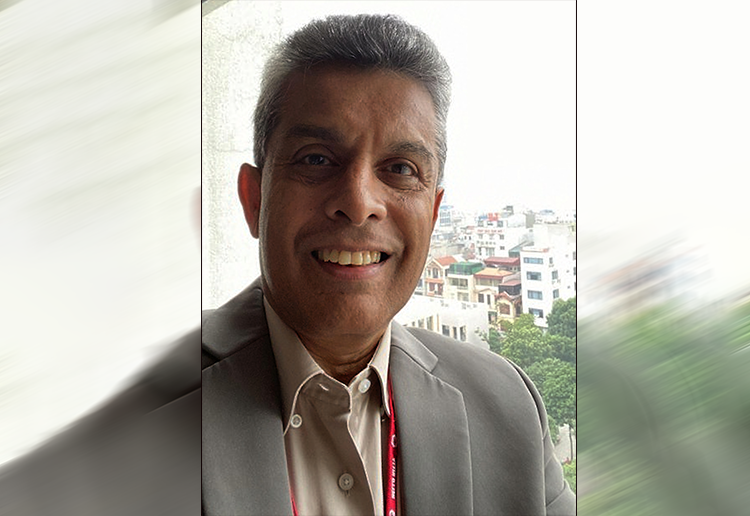
Dr. Lal Samarakoon was born in Dehipe, Padiyapalella, Nuwara Eliya. He had his primary education at Gampola Zahira College and Ratnapura Ferguson College, and entered the University of Kelaniya from Matale Science College.
Obtaining a B Sc. degree in Physical Science with a first class, he qualified as a Surveyor from the National Survey Department and started serving the Mahaweli Development Program in Girandurukotte in 1986. Lal was awarded a Monbusho Scholarship, by the Government of Japan to obtain the Doctor of Philosophy degree in remote sensing from the university of Ehime.
He served Nippon Koei, a planning, design and construction company for several years. In 1998, Lal was appointed the Director of Geoinformatics Center of the Asian Institute of Technology, Thailand. He served in this position till 2018.
Dr. Lal Samarakoon has represented a generation that has seen the disaster risk management discipline transition from the sidelines of a welfare-oriented subject to a full-fledged discipline, which has emerged as a component of development discourse subsequently. He was a deep-thinking technocrat, innovative scientist, and dependable professional who firmly believed technology applications are needed to manage disasters and build climate resilience in Asia.
He observed the significant capacity gaps that exist in Asia in applying remote sensing and GIS tools in disaster risk management, and supported the countries in the Asia region to reduce these capacity gaps over the last 30 years. During his longstanding career at the Geoinformatics Center of the Asian Institute of Technology (AIT) he developed methodologies which provided better exposure for disaster management professionals in the region to use spatial information in Disaster Risk Management.
He successfully partnered with other international technical and academic institutes, including with the postgraduate Institute of Science in Sri Lanka, broadening the objectives and opportunities for cross-learning. His work was instrumental to prove that scientific advancement can be utilized successfully and cost-effectively to improve disaster risk management and climate adaptation practices.
His work as a scientist supported applying spatial data in several countries in the Asia region; the Lao PDR, Cambodia, Vietnam, Nepal for disaster risk reduction. Dr. Samarakoon will be remembered for his pioneering and outstanding contributions to Sri Lanka, and other countries in the Asia region with scientific innovation, training, education and policy support. His untiring efforts have helped create a pool of disaster risk management practitioners in mandated institutions, a much needed contribution for meeting the current day disaster and climate risk challenges.
May he attain nibbana,
N.M.I.S. Arambepola
Nirmala Fernando
Madhavi Malalgoda Ariyabandu
-

 Foreign News4 days ago
Foreign News4 days agoOne of Ireland’s ‘most wanted’ facing extradition from Dubai
-

 Features3 days ago
Features3 days agoBrands … and brand names
-
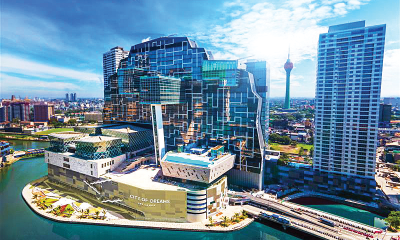
 Business3 days ago
Business3 days agoJohn Keells Unveils its 687 room luxury hotel, Cinnamon Life at City of Dreams Sri Lanka
-

 News6 days ago
News6 days agoSri Lankan worker becomes millionaire doing cleaning jobs in Australia
-
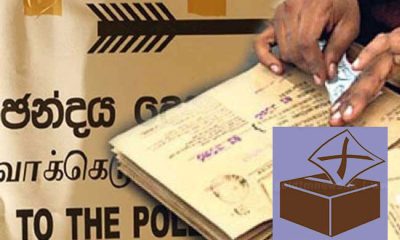
 News4 days ago
News4 days agoNominations close, NPP and SJB reveal National List nominees
-

 Editorial1 day ago
Editorial1 day agoGenie at large
-
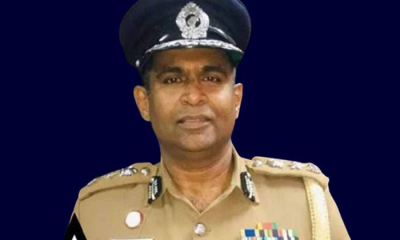
 News3 days ago
News3 days ago‘Cold case’ investigations into past crimes begin says police
-
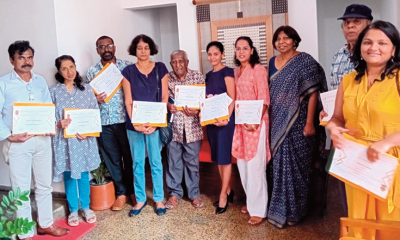
 News3 days ago
News3 days agoLaunch of Journal and Distribution of Awards











